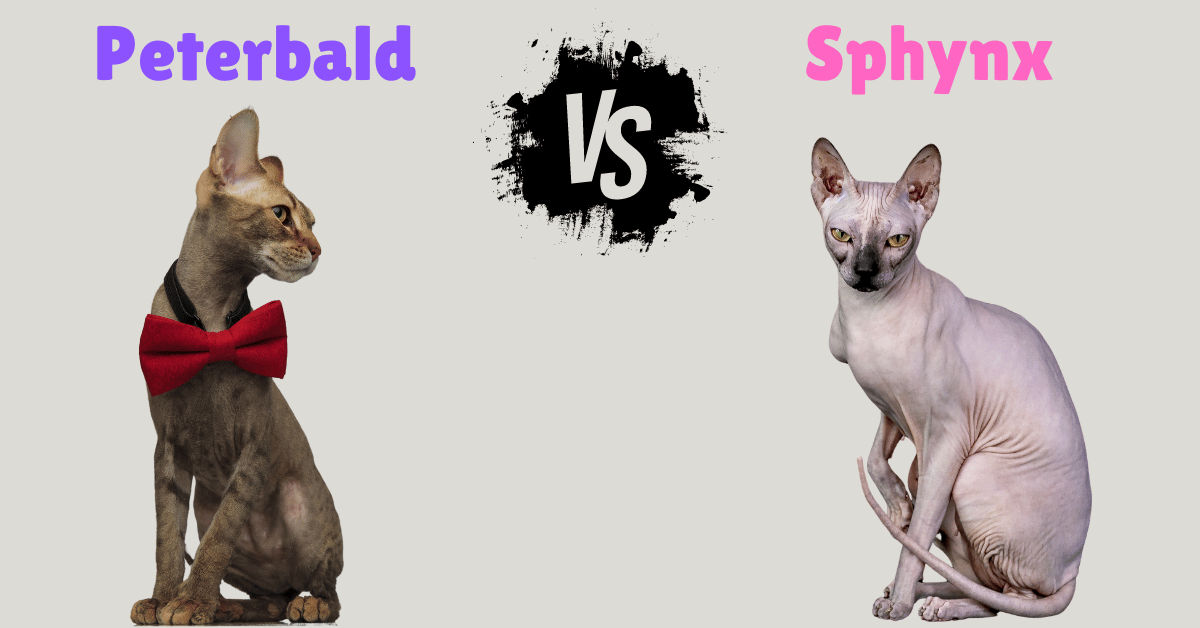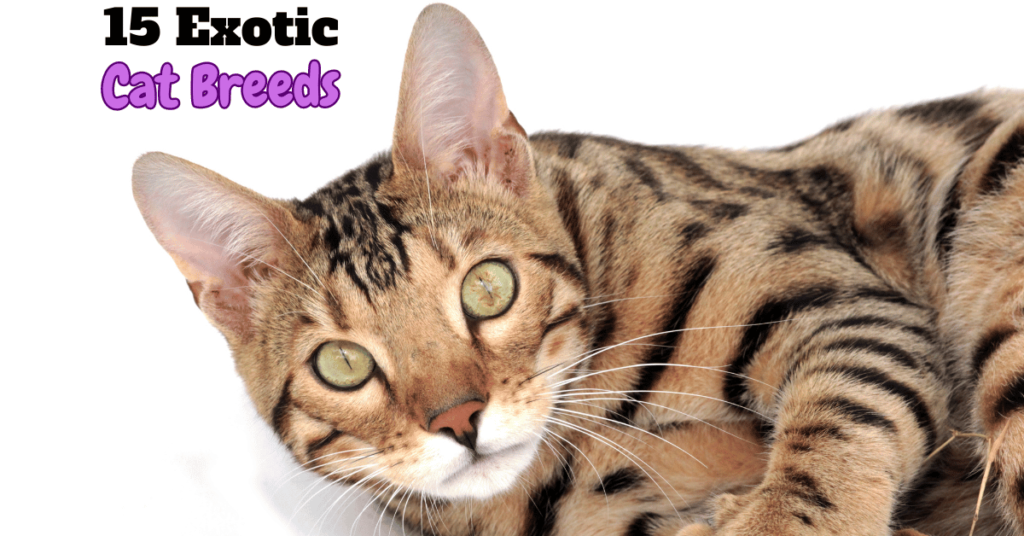Peterbald vs Sphynx Cat: An Introduction to Their Unique World
Step into the unique world of hairless cats, where the Peterbald and Sphynx reign supreme, each breed flaunting a distinct charm that captivates cat enthusiasts around the globe.
These breeds are more than just their bald beauty; they are a testament to how diversity in genetics can lead to some of the most affectionate and intriguing companions.
This article will guide you through a detailed comparison of the Peterbald and Sphynx cats, exploring their origins, characteristics, and what makes each of them special.
Key Differences: Peterbald vs Sphynx
| Feature | Peterbald | Sphynx |
|---|---|---|
| Origin | Russia, 1994 | Canada, 1966 |
| Hairlessness | Varies widely | Consistently hairless |
| Body Structure | Elongated body, almond eyes | Muscular build, lemon eyes |
| Weight | 7 to 14 pounds | 5.5 to 12 pounds |
| Temperament | Relaxed, less demanding | Energetic, extroverted |
| Health | Generally healthier | Prone to specific ailments |
Origin and History: Tracing the Roots
Sphynx Cat: A Canadian Mutation Marvel

The Sphynx, known for its striking appearance, owes its existence to a natural genetic mutation that occurred in Toronto, Canada, in 1966. This breed emerged from a hairless kitten named Prune, marking the beginning of the Sphynx breeding program. Its captivating appearance and endearing personality quickly won hearts, establishing the Sphynx as a beloved breed worldwide.
Peterbald Cat: Russia’s Elegant Experiment
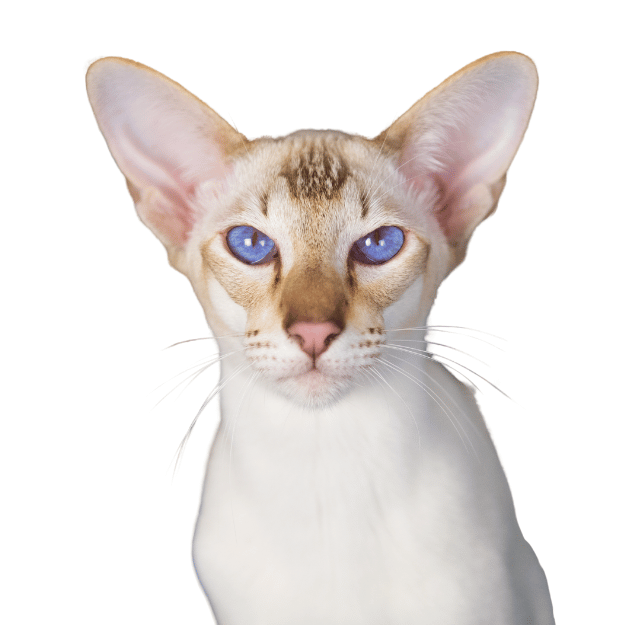
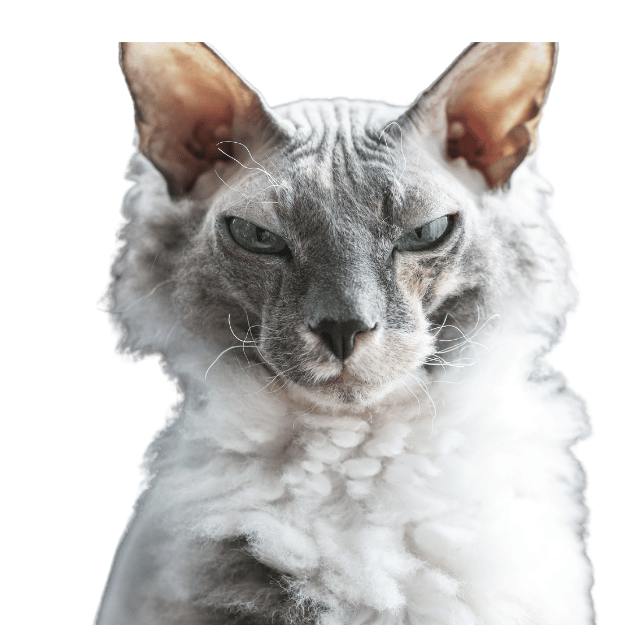
In stark contrast, the Peterbald’s story begins in 1994 in St. Petersburg, Russia. The breed was innovatively created by mating a Don Sphynx, known for its hairlessness, with an Oriental Shorthair, admired for its elegant stature and expressive eyes. This intentional crossbreeding aimed to blend the best traits of hairlessness and refined body structure, giving the Peterbald its unique set of features and a robust genetic foundation.
Physical Characteristics: A Detailed Comparison
Exploring the physical traits of these hairless wonders reveals more than just their lack of fur. Each breed brings its own unique blueprint of body features that not only define their appearance but also add to their individual charm.
Degree of Hairlessness
The spectrum of hairlessness in Peterbald cats varies widely. They can range from completely bald, known as the ‘Hairless’ type, to having a fine down, referred to as the ‘Flock’ or ‘Velour’ type, and even a short, brush-like coat. This variability offers potential owners a unique choice within the same breed, depending on their preference for grooming and texture.
In contrast, the Sphynx is predominantly known for its complete hairlessness, although it is more accurately described as having a fine layer of downy fur. This gives the Sphynx a peach-like texture, consistent across the breed, making them famously ‘naked’.
Facial Features and Head Structure
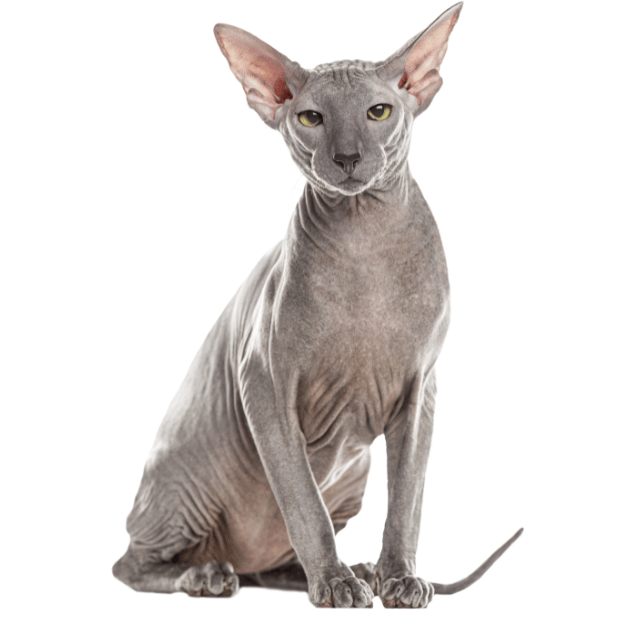
Peterbalds feature a more elongated and slender head, aligned with their Oriental Shorthair heritage. Their almond-shaped eyes give them a mysterious and elegant expression that is both deep and penetrating.
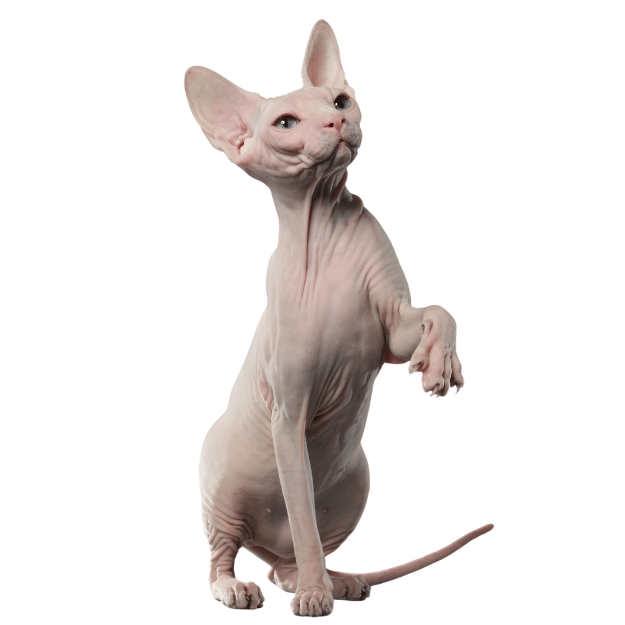
Sphynx cats have a distinctly rounder and wider head, giving them a more approachable and whimsical look. Their lemon-shaped eyes contribute to a friendly and open facial expression, which is a signature of their amicable nature.
Body Build and Skin Texture
Peterbalds are generally slimmer and more muscular, with a refined build that speaks to their Oriental roots. Their skin can vary from smooth to a slight peach fuzz, adding to the tactile experience of petting them.
The Sphynx tends to have a sturdier, more robust build. Their skin is wrinkled, especially around the shoulders, neck, and ears, which not only adds to their distinct look but also demands specific skincare to maintain their well-being.
Temperament and Personality: Affectionate and Social
The behavioral traits of Peterbald and Sphynx cats underscore their desirability as pets. Both breeds share a foundation of affection and sociability, yet they express these traits in subtly different ways.
Affectionate Interactions
Peterbalds are known for their graceful demeanor, Peterbald cats often exhibit a calm and loving nature. They form strong, loyal bonds with their owners and seek out human interaction regularly. Their affection is expressed through gentle nudges and a constant presence by your side, reflecting their deep-seated need for companionship.
The Sphynx takes affection to a higher level with its almost dog-like behavior. These cats are not just interactive but actively seek engagement, playing fetch, greeting their owners at the door, and even following commands. Their warmth isn’t just metaphorical; they often physically seek warmth from their human companions due to their lack of fur.
Social Dynamics
Both breeds thrive in social environments where they can interact frequently with humans and other pets. Their outgoing nature makes them excellent family pets, adaptable to busy households where they can be the center of attention.
Peterbalds are slightly more reserved, making them well-suited to environments where they can find quiet when needed, though they still relish being part of daily activities.
Sphynx cats are the life of the party and will involve themselves in all family dealings, showcasing a gregarious and sometimes mischievous personality. Their high energy levels make them perpetual entertainers, always ready for play or affection.
Health and Care Considerations: Special Needs of Hairless Breeds
Both the Peterbald and Sphynx require specific care due to their hairlessness, which makes them more vulnerable to environmental factors and necessitates a proactive approach to their health.
Regular Bathing and Skin Care
Peterbalds and Sphynx cats both produce body oils that, in furry cats, are absorbed by their fur. However, without fur, these oils can accumulate on the skin and lead to greasiness and potential skin issues. Weekly bathing is essential to manage this, using gentle, cat-specific shampoos that preserve the natural oils while keeping the skin clean and hydrated.
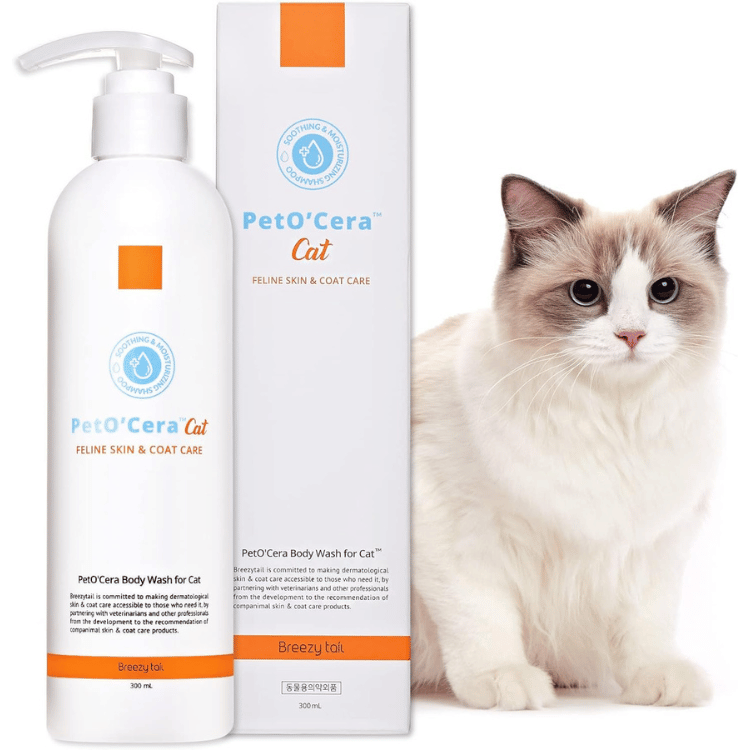
Sensitivity to Temperature
The lack of fur also affects their ability to regulate body temperature. Both breeds are prone to chill in colder environments and can easily become sunburned if exposed to direct sunlight for too long.
- Indoor Living: Keeping these cats indoors is recommended to protect them from extreme temperatures and environmental hazards.
- Warm Clothing: In cooler climates, providing your cat with warm clothing can help maintain a comfortable body temperature.
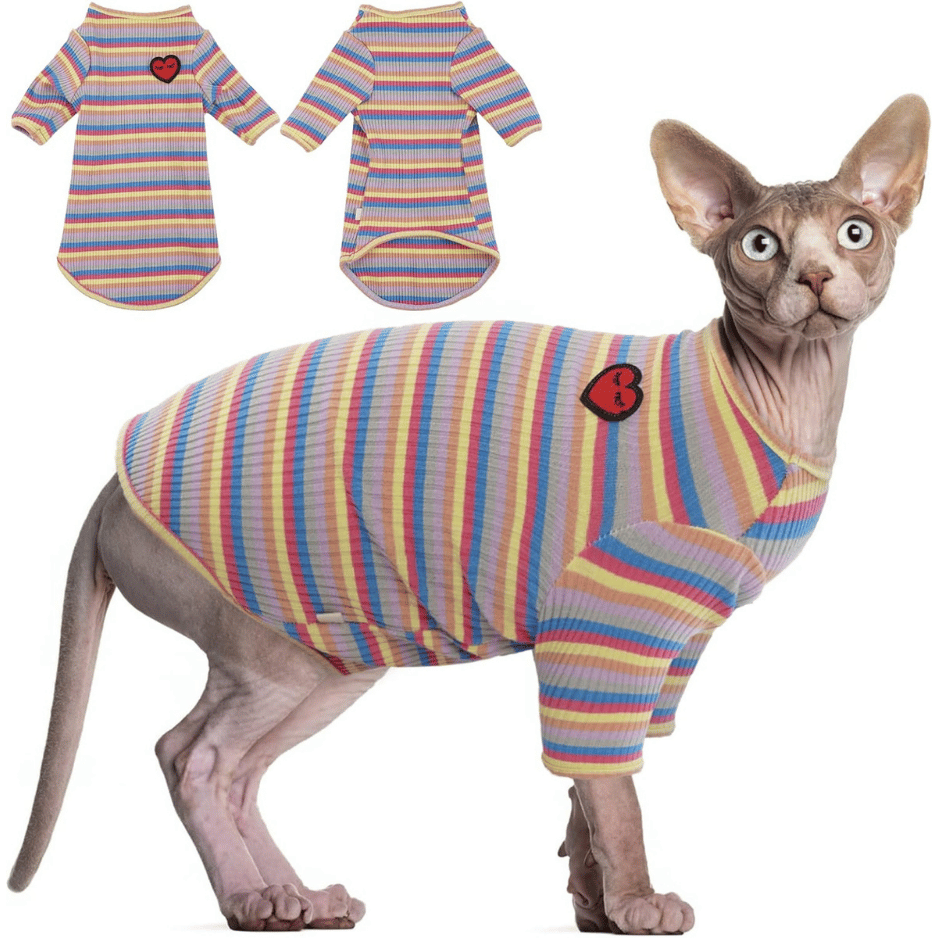
Health Concerns Specific to Each Breed
The Sphynx cat breed is particularly prone to hereditary myopathy, a genetic condition affecting muscle function, and heart conditions such as hypertrophic cardiomyopathy. Regular veterinary check-ups are crucial to monitor for signs of these conditions.
Peterbald are generally healthier, Peterbalds are nonetheless monitored for similar conditions as the Sphynx due to their shared genetics. Their elongated physique also requires checks for joint and muscle issues, which can arise from their distinct body structure.
Choosing the Right Breed: Factors to Consider
When deciding between a Peterbald and a Sphynx, it’s important to consider not only the aesthetic and physical attributes of these breeds but also their health, temperament, and your own lifestyle needs.
Lifestyle Compatibility
Peterbalds, known for their generally calmer demeanor and robust health, are an excellent choice for first-time cat owners. They thrive in quieter environments yet still value regular interaction and companionship. With fewer health maintenance needs than the Sphynx, Peterbalds are comparatively easier to care for.
The Sphynx’s high energy and sociable nature make it ideal for families or individuals with an active lifestyle, as this breed thrives on stimulation and attention. Due to its need for frequent bathing and health monitoring, the Sphynx requires owners who are prepared for a hands-on approach to pet care.
First-Time Owners
For those new to owning a hairless cat, the Peterbald can be a gentler introduction to the breed’s requirements. Their health resilience and quieter temperament might align better with those still learning about the specific needs of hairless cats.
Considerations for Existing Pet Owners
Both breeds are highly sociable and generally do well with other pets. However, the Sphynx’s playful nature and need for interaction make it a particularly good companion for homes with other pets, provided that all animals are properly introduced and socialized.
Peterbald vs Sphynx Cat – Which Breed Captures Your Heart?
Choosing between a Peterbald and a Sphynx cat involves aligning their unique characteristics with your lifestyle and what you seek in a feline companion. Both breeds offer immense love and distinctive quirks that can bring joy to any home.
At Sweet Purrfections, we understand the special requirements of these remarkable hairless breeds. We have curated some of the best products on the market to ensure they receive the best care. We encourage potential owners to explore our catalog for hairless cat breeds, gather as much information as possible, and even meet some Peterbald and Sphynx cats in person.
Meet Sean, a fintech whiz with a penchant for pet purrs and blockchain buzz. After a decade of fintech feats, Sean’s tech talents leaped from ledger lines to litter lines, driven by a passion for pets and a vision for a more connected pet care community. With three critter companions as co-pilots, Sean launched this blog to share a treasury of pet-friendly tech tips and tales.

